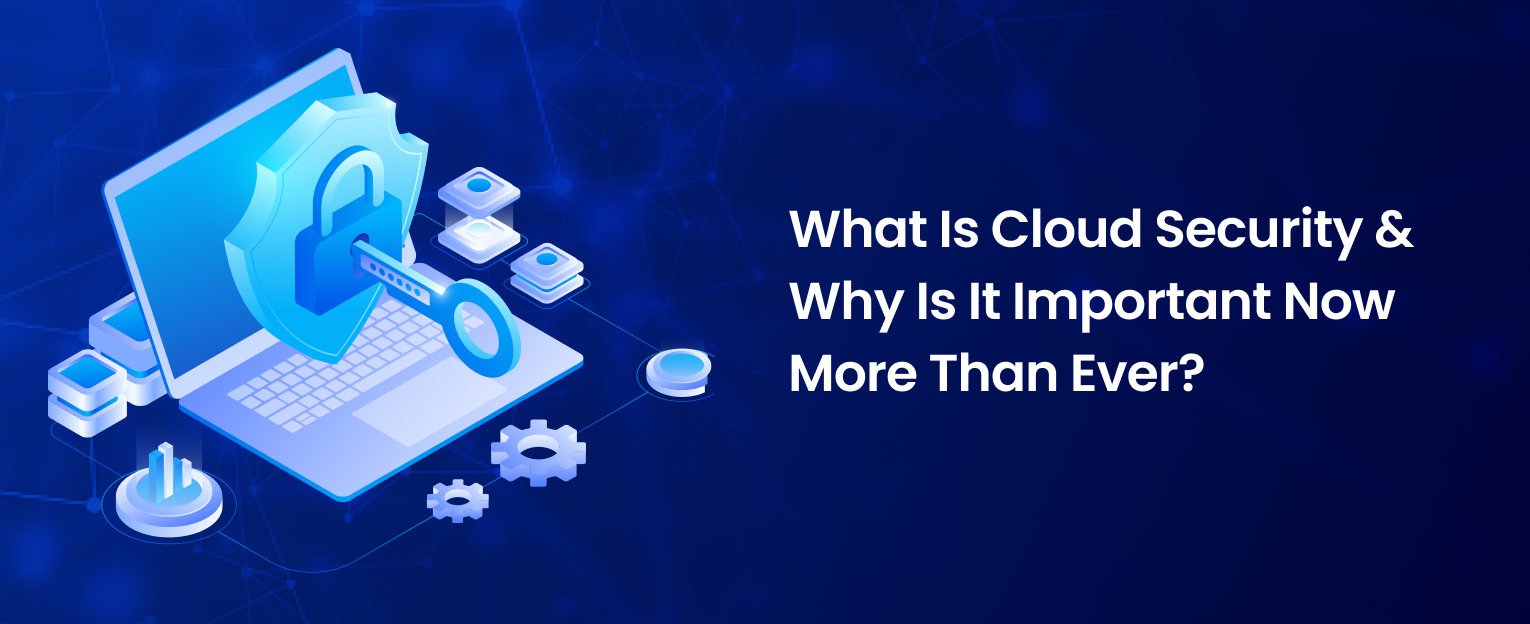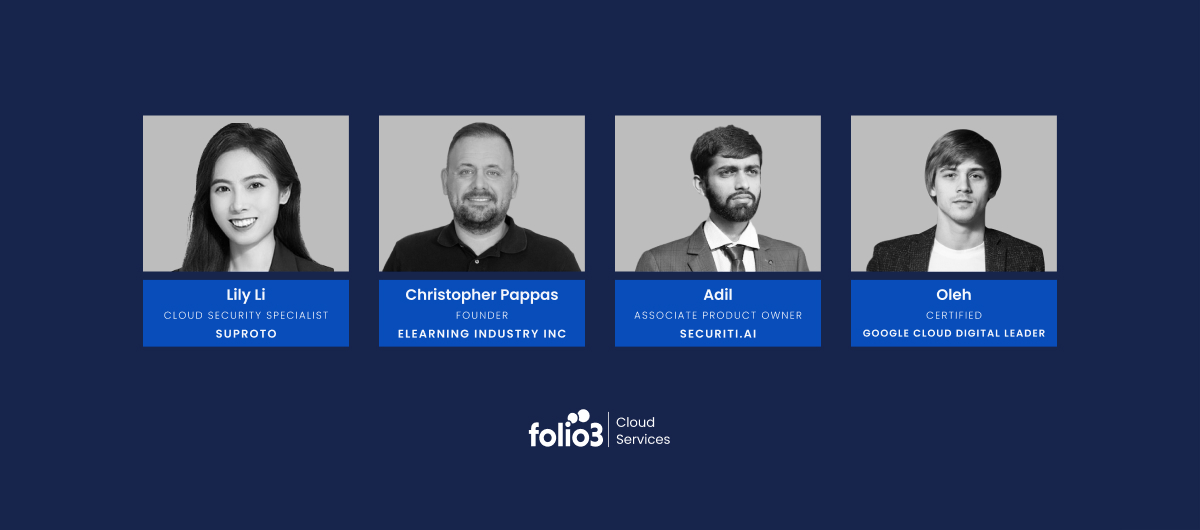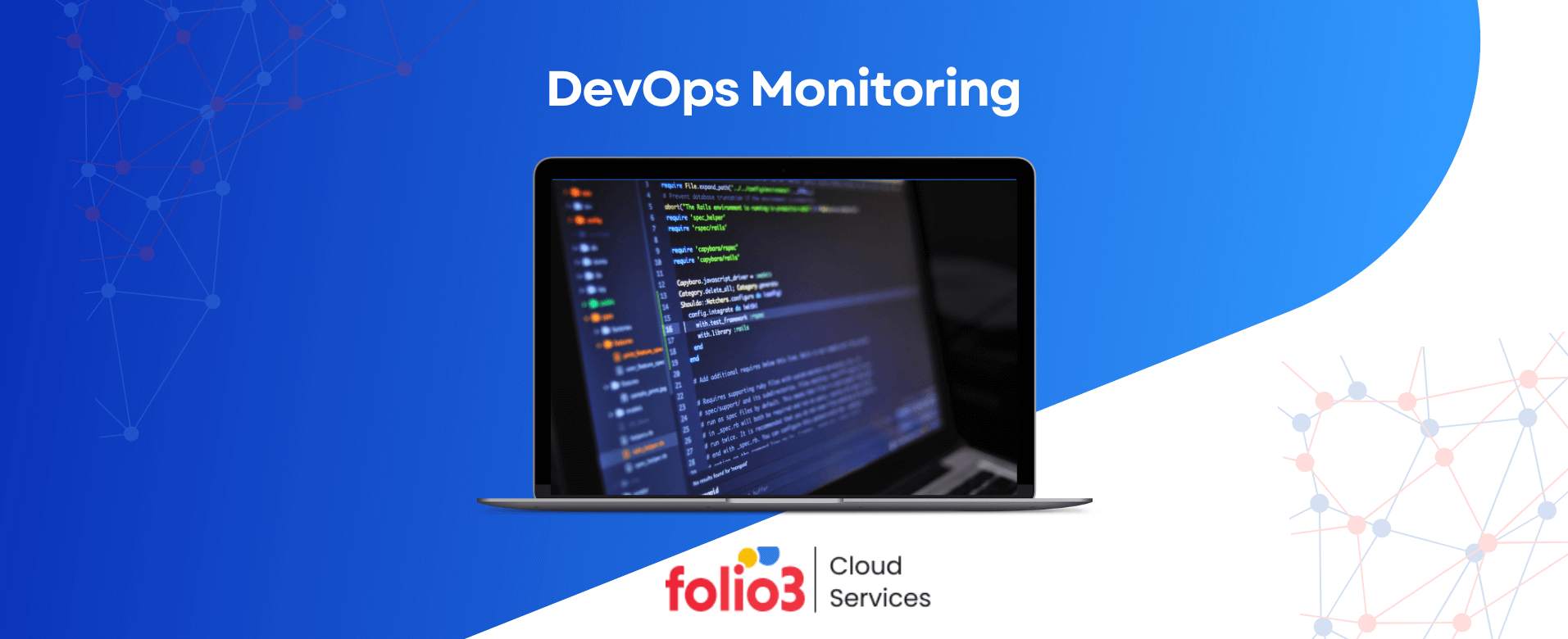Cloud computing offers many benefits to businesses, like scalability, flexibility, and ease of use. Companies can only reap the advantages of cloud security after first learning about the threats it poses.
- In recent years, cloud security investment has risen worldwide, from 595 million USD in 2020 to over $4 billion in 2021. It was anticipated that by 2023, cloud security investment would have surpassed $6.6 billion.
- In 2021, 60% of respondents said their company’s IT security policy-protected email. Notably, about half of them said their policy-protected their home office. However, it also exposes them to new dangers when they use it.
- According to research from Ermetic and IDC, 80% of chief information security officers (CISOs) said their firm had a cloud data breach during the past 18 months. 43% had suffered 10 or more security breaches.
What is cloud security, and why is it so important? Let’s examine the finer points to get in-depth information.
Tailored Cloud Solutions for Your Business!
Get personalized cloud consulting services from our team of experts to address your unique business needs and challenges.
What is Cloud Security?
A set of safeguards known as “cloud security” or “cloud computing security” is implemented when shielding cloud-based infrastructure, apps, and data. These methods ensure data privacy, security against unauthorized access, and the ability to authenticate users and devices.
Several ideas, approaches, and technologies have been developed to manage and secure the cloud environment. Cloud security can lessen the risks while switching to a cloud environment by implementing stringent access controls, system audits, adherence to global security regulations, and other measures.
What is Cloud Computing?
Cloud computing refers to making computing resources, such as storage space for data and processing power, readily available on-demand without requiring the user to perform any administrative tasks themselves. Large clouds often have their functions spread across multiple locations, each of which is a data center.
The “pay as you go” model commonly used in cloud computing security can assist in cutting down on upfront costs but can also lead to unforeseen operational costs for consumers. How to secure cloud computing? Coherence is achieved through the pooling of resources.
Business data security, disaster recovery, organizational adaptability, software development, and comprehensive data analytics are security benefits of cloud computing.
For instance:
- Healthcare is cloud-secure and utilizes the cloud to provide more disease-specific treatments.
- Financial services-providing companies utilize the cloud to prevent and detect fraud.
- Video game developers disperse online games globally via the cloud.
Why is Cloud Security Important?
With cloud computing security for sensitive data, businesses can advance to new heights. Better customer service is only one benefit of the security of the cloud, including the ability to operate remotely and quickly scale up or down, sharing files and data between computers, and many other advantages.
However misconfiguration risks and cybercriminal threats must be eliminated from any business’s cloud system. The importance of cloud security becomes apparent. Protecting your digital assets and reducing the likelihood of human mistakes with cloud security helps you avoid incurring unnecessary expenses resulting from a breach.
The following benefits of cloud security, which are now widely accepted, will explain why cloud security is important.
Overcoming A Disaster
Data loss frequently happens, especially on cloud servers. Data loss can put a cap on your business due to various causes and accidents. Cloud service providers ensure everything is cloud security and have a disaster recovery strategy even though losing data is a terrible experience. Disaster recovery helps you recover lost data so you may restart business activities without worrying about data loss.
Access Levels
When sensitive information becomes public, it is usually due to lax security measures rather than malicious hacking. Indeed, public data leaks aren’t as serious as data theft, but they can still hurt your company’s reputation.
Cloud platform security is crucial because your organization will always be vulnerable if you and your workers do not adhere to cybersecurity best practices. The safest policy includes limiting access to confidential data and securing cloud applications.
Increasing Organizational Adaptability
Popular cloud providers offer cloud security as a service. They deliver a flexible licensing model that allows businesses to grow and shrink by adding or removing licenses as needed. In many cases, they may be introduced quickly, allowing for easy growth (which is impossible with on-premise technology).
This provisioning of resources can often be automated. Thus, human intervention is only sometimes required.
Improved Data Security
Physical systems are less likely to be tampered with if they are no longer present in the workplace. This is because no one in the organization will have physical access to the equipment.
In addition, cloud platform security providers regularly update, patch, and back up their systems because the same infrastructure constraints do not bind them as a conventional business. In and of itself, this is paramount to preserving robust security in the cloud.
What Are Some Cloud Security Challenges?
Although cloud server security benefits all businesses, some challenges come with it.
Low visibility
It’s easy to lose track of who is accessing your data in the cloud and how they use it because many cloud services are accessed outside corporate networks and by third parties.
Multitenancy
Public cloud environments hold several client infrastructures under one roof; therefore, hostile attackers can compromise your hosted services as incidental harm when they target other businesses.
Access control and shadow IT
When on-premises solutions enable businesses to regulate and restrict access points easily, cloud environments can make enforcing the same sorts of restrictions harder. Securing cloud applications could be problematic for companies without BYOD policies but allow employees to access company cloud services without restriction.
Compliance
The complexity of managing regulatory compliance might be a barrier for certain firms to move to the cloud. Companies nonetheless bear the ultimate responsibility for protecting customer information. Placing too much data in external services to handle this musty task could lead to expensive compliance issues.
Misconfigurations
Cloud computing platforms face a significant threat from insiders because they are responsible for 86% of data breaches. Misconfigurations arise when incorrect security parameters are configured or administrative passwords must be regularly changed.
How Does Cloud Security Work?
Each measure used to ensure security management in the cloud is done with the following goals in mind:
- To restore data if it is ever lost.
- Protect computer systems and servers from hackers.
- To stop data leaks caused by human mistakes.
- Lessen the impact of any data or system breaches as much as possible.
Data Security
Protecting sensitive information is a technical part of cloud security that focuses on thwarting threats. Protecting private information from prying eyes is a shared responsibility of service providers and their customers, who might use technological safeguards to restrict access. Encryption is among the most useful of these techniques.
Since only the encryption key holder can see your data, it is highly secure. It will be utterly unreadable if your information is ever lost or stolen. Security measures for data transit, such as virtual private networks, are also a priority in cloud networks (VPNs).
Identity and Access Management (IAM)
Management of identities and the permissions associated with them is known as Identity and Access Management (IAM). The same holds for the context of user account authorization and authentication management. All the users are kept from accessing sensitive information and systems by implementing access restrictions.
Methods like multi-factor authentication and password management are included in IAM. This highlights why cloud security is important.
Monitoring
The primary focus of governance should be developing and enforcing policies that identify and neutralize potential threats. Small and medium-sized businesses and organizations can benefit from the security in the cloud if it is used to monitor and prioritize risks to provide the highest level of security for all vital systems. However, it may be beneficial for specific cloud clients to emphasize safe user behavior norms and training.
Guidelines for safe use and dealing with dangers are critical in the workplace, although knowing them benefits all users.
Data Retention (DR) and Business Continuity (BC) Planning
Data retention (DR) and business continuity (BC) planning incorporate technical disaster recovery strategies in the case of data loss. Data redundancy strategies, such as regular backups, should be a part of any DR and BC strategy.
It could be helpful to implement technical systems to ensure continuous operations. Backup validation frameworks and detailed recovery procedures for staff members are also crucial components of a comprehensive BC strategy.
Lawful Observance
To comply with the laws enacted by governing bodies, it is essential to preserve users’ privacy. Governments are beginning to understand the importance of taking measures to safeguard citizens’ data from being sold or otherwise used for profit. Therefore, to respect these policies, organizations must follow specific guidelines.
One way to protect one’s privacy when dealing with sensitive data is to use data masking.
What Types of Cloud Security Solutions are Available?
Cloud service providers are offering a plethora of cloud security solutions. The following are the top 5 cloud solutions for security in the cloud.
1. Identity and Access Management
Businesses may enforce consistent, policy-driven procedures for all users attempting to connect to any resource, regardless of where that resource is physically located, with the help of identity and access management (IAM) tools and services.
The fundamental goal of IAM is to assign users with outstanding credentials that can be used to monitor their activity and apply controls to their interactions with data as required.
2. Data Loss Prevention (DLP)
Data Loss Prevention (DLP) services offer multiple layers of protection for data that must be kept private yet is hosted in the cloud. DLP systems protect information either in motion or at rest by alerting administrators to problems and encrypting data at rest.
3. Security Information and Event Management (SIEM)
Cloud-based security systems benefit greatly from automated monitoring, detection, and response to attacks, thanks to Security Information and Event Management (SIEM). SIEM technology enables IT workers to effectively apply network security measures and respond rapidly to possible attacks by linking data across various platforms.
4. Secure Access Service Edge (SASE)
Rather than sending all communication to a data center for inspection and then sending it back, Secure Access Service Edge inspects and approves traffic at a closer enforcement point, lowering latency for remote users.
Cloud-based security is encouraging, as many companies have maintained their work-from-home policy in the wake of the COVID-19 outbreak, even though doing so requires a significant investment of time and money.
5. Contingency and Recovery Plan
Data violations and disruptive interruptions can still occur despite all the protection businesses take for their physical and cloud-based infrastructures. In the event of a catastrophic security breach or system outage, businesses require lightning-fast reaction times.
Disaster recovery solutions are essential to cloud services security because they provide businesses with the tools and services they need to recover fast from a disaster and get back to business.
How Should You Approach Cloud Security?
Every company is unique, and the best strategy to tackle security in the cloud might vary based on several factors. However, the best practices for establishing a safe and long-lasting cloud computing architecture have been compiled by the National Institute of Standards and Technology (NIST).
The NIST has set guidelines and benefits of cloud security to help businesses evaluate their security posture and implement effective prevention and recovery actions. The National Institute of Standards and Technology (NIST) has formed a cloud security framework based on these guidelines.
Cloud security posture management is another cutting-edge innovation that helps enforce NIST’s cybersecurity architecture (CSPM).
Misconfigured cloud infrastructures, whether on the part of corporations or cloud providers, can leave businesses vulnerable to a wide range of threats. CSPM solves these problems by facilitating the deployment of cloud security’s fundamental elements. Some examples are digital asset management (DAM), threat response (TR), risk mitigation (RM), and identity and access management (IAM).
Cloud Security And Why Is It Important (Insights from Experts)
Gain expert insights into Cloud Security And Why Is It Important.
Lily Li, Cloud Security Specialist at EY
Q1) Cloud Security And Why Is It Important?
Multi-Cloud Strategy Success: In 2020, our customer base grew, requiring us to manage diverse data, including complex CNC designs and sensitive client information. We implemented a multi-cloud strategy, utilizing Azure for analytics, AWS for scalability, and a private cloud for sensitive tasks. This approach enabled efficient resource expansion, strengthening our digital foundation.
Proactive Defense Pays Off: In late 2021, we transformed our team into cybersecurity experts to protect our cloud data. Through SecureTech Talks and threat simulations, we equipped our team to recognize and respond to threats effectively. This proactive approach paid dividends when we thwarted a real phishing attempt. Our vigilance neutralized the threat and solidified our reputation as a trusted CNC industry partner.
Christopher Pappas, Founder of eLearning Industry Inc
About your query, as the Founder of eLearning Industry Inc., it’s crucial to understand why cloud security is more important than ever for our organization. With the growing reliance on cloud-based infrastructure and remote work, ensuring the safety of our eLearning platforms and sensitive data is paramount.
Cyber threats are evolving rapidly, and the shared responsibility model in cloud computing means we must actively protect our assets. Compliance requirements and data privacy concerns are also significant, and maintaining customer trust is essential. Cloud security safeguards our reputation and helps with business continuity and scalability.
By prioritizing robust cloud security measures, we can continue to deliver high-quality eLearning solutions while keeping our students’ and clients’ information secure in this ever-changing digital landscape
Adil, Associate Product Owner at Securiti.ai
Q1. What Is Cloud Security And Why Is It Important Now More Than Ever?
Cloud security is the practice of protecting cloud-based systems, data, and applications from cyber threats. It’s vital because we’re storing more sensitive data in the cloud than ever before. With the increase in cyber-attacks and data breaches, robust cloud security measures are essential to protect our data and the integrity of our business operations.
Q2. Why do you recommend specific multi-cloud and hybrid cloud strategies, and what makes it important?
I recommend multi-cloud and hybrid cloud strategies because they offer flexibility, optimize resources, and mitigate risks associated with single-vendor dependency. By spreading services across multiple clouds, you can avoid service outages and get the best-of-breed services. A hybrid cloud strategy, which combines private and public clouds, is important for maintaining control over sensitive data while still leveraging the scalability of the public cloud for less critical resources.
Q3.Tips and best practices for effectively using the recommended tool. For multi-cloud and hybrid cloud environments, it’s important to:
- Implement consistent security policies across all platforms.
- Use cloud management tools to get a unified view of your resources.
- Regularly review and optimize costs.
- Ensure compliance with data privacy regulations.
- Invest in training your team to handle the complexities of a multi-cloud/hybrid cloud strategy.
Q4. Case studies or previous work demonstrating the success of the recommended tool.
In my experience, using cloud management platforms like VMware or Red Hat CloudForms has shown positive outcomes. For instance, a healthcare provider I worked with utilized these tools to maintain HIPAA compliance across their clouds, which significantly streamlined their operations and improved data protection.
Q5. Information on challenges faced during the migration process and how the recommended tool helped overcome them.
During migration to a multi-cloud setup, we faced challenges like data
sovereignty issues and downtime. Our cloud management tool helped automate the migration process, allowed us to keep data within regional boundaries, and ensured that services could be switched over with minimal downtime. The ability to pre-plan and simulate migrations was invaluable in mitigating these challenges.
Oleh, General Manager CloudFresh
What Is Cloud Security And Why Is It Important Now More Than Ever:
We strongly recommend Google Cloud Platform (GCP) as the cornerstone of a multi-cloud and hybrid cloud strategy. With its global infrastructure, innovative services, collaboration strengths, and security, GCP enables us to deliver on our core focuses – pioneering cloud solutions, location-based capabilities, seamless teamwork, and DevSecOps excellence.
With data centers across the globe, GCP provides a worldwide presence vital for low-latency access wherever businesses operate. This expansive reach ensures that location-based services and mapping solutions are delivered as needed.
GCP also leads in launching the latest-generation cloud services like AI, ML, and serverless computing to future-proof businesses.
For collaboration, GCP seamlessly integrates with Google Workspace productivity tools to enable teams to work together from anywhere. This aligns perfectly with our commitment to allowing seamless, location-independent teamwork. On the security front, GCP offers robust access controls, encryption, auditing, and compliance certifications to reinforce DevSecOps best practices.
We recommend four best practices to maximize GCP’s potential:
– First, build a cloud data lake with storage, analytics, and data
pipelines to efficiently manage huge datasets.
– Second, implement container orchestration with GKE to easily deploy and scale microservices.
– Third, optimize costs proactively using tools like Cost Explorer and Budgets.
– Fourth, follow Google’s guidelines to strengthen security posture across access, data, and infrastructure layers.
We have seen outstanding results when leveraging GCP as the primary cloud.
For one retail client, GCP analytics and ML improved inventory availability by 20% and reduced holding costs by 15% through location-based logistics optimization.
While migrations pose challenges, GCP services like Transfer Service and Migration for VMs eased the transition by reducing downtime and data loss.
In summary, GCP’s global infrastructure, latest services, collaboration strengths, and security make it the ideal backbone for multi-cloud environments aligned to our expertise areas – pioneering cloud solutions, location-based capabilities, seamless teamwork, and DevSecOps excellence. Our proven approach helps clients fully leverage GCP to drive innovation.
Conclusion
Transitioning your computing needs from on-premises hardware to the cloud is an important step in setting your company up for future success. The cloud simplifies content administration, increases app availability, enhances team collaboration, and reduces administrative burdens.
Some may be hesitant to move their data to the cloud because of security worries, but trustworthy Cloud Service Providers may allay your fears by providing you with extremely secure cloud services.
We hope our article helps you understand what is cloud security and its importance. Do let us know in the comment section if we missed anything.
FAQs
Here are some FAQs about Cloud Security:
What Is Meant By Cloud Security?
“Cloud security,” sometimes known as “cloud computing security,” is a set of safeguards to ensure the safety of cloud-based resources. All your users and devices will be identified appropriately, your data and resources will be protected, and your privacy will be preserved thanks to these safeguards.
What Are The 3 Categories Of Cloud Security?
A cloud server security model could be private, public, or a hybrid of the two.
- In the Private model, a single company is in charge of the requisite infrastructure. The private cloud approach is ideal for large enterprises.
- The public model’s shared services and underlying infrastructure are available to all users. Public cloud models are an attractive option for cost-conscious enterprises of all sizes.
- A hybrid cloud is an integrated system that blends public and private clouds to provide users with a more flexible and scalable solution.
What Are The Four Areas Of Cloud Security?
- Encryption, Identity and Access Management (IAM), Security Operations, and Threat Detection.
- Cloud Service Providers (CSPs).
- Security operations centers (SOCs).
- Threat detection.



















